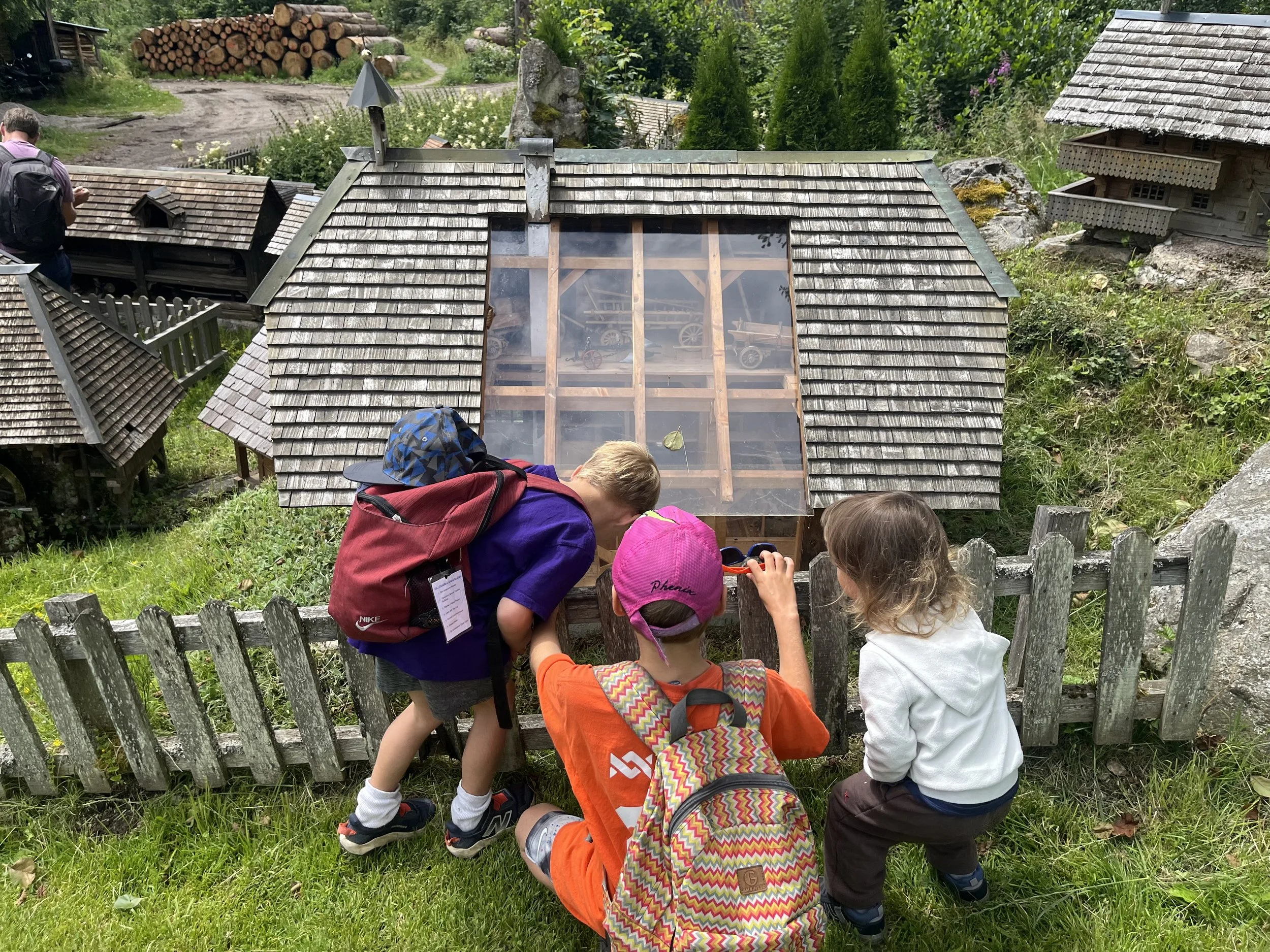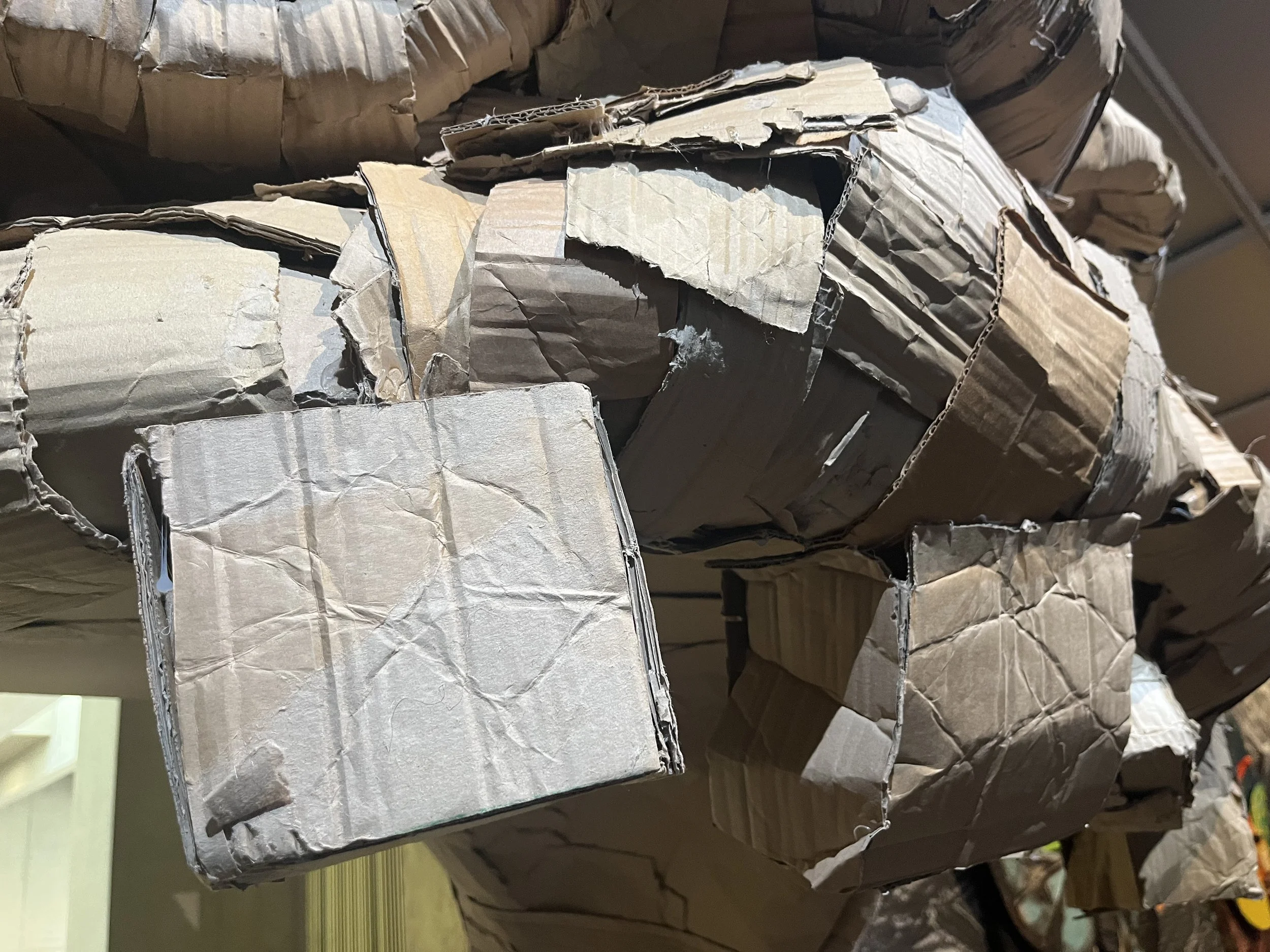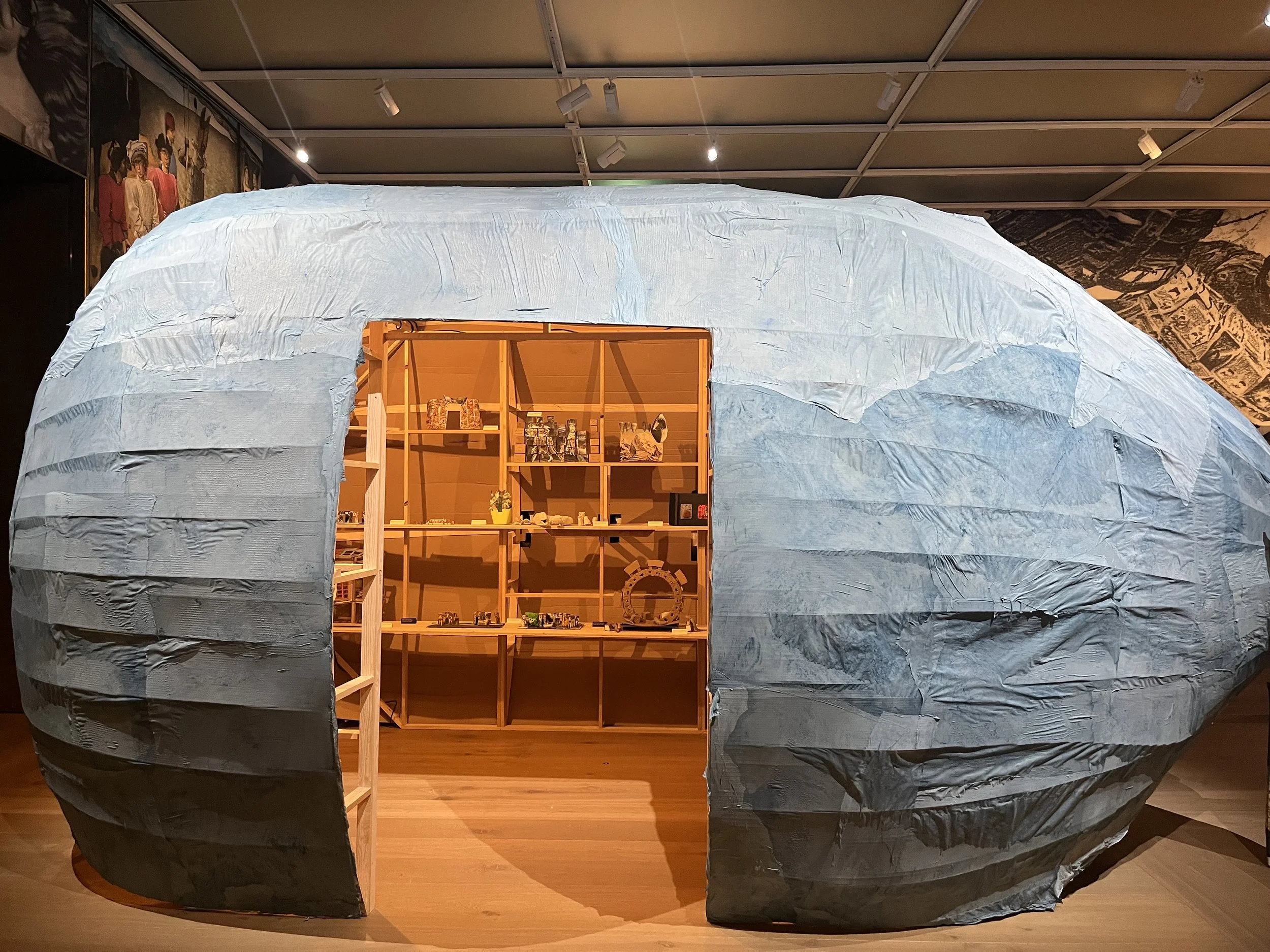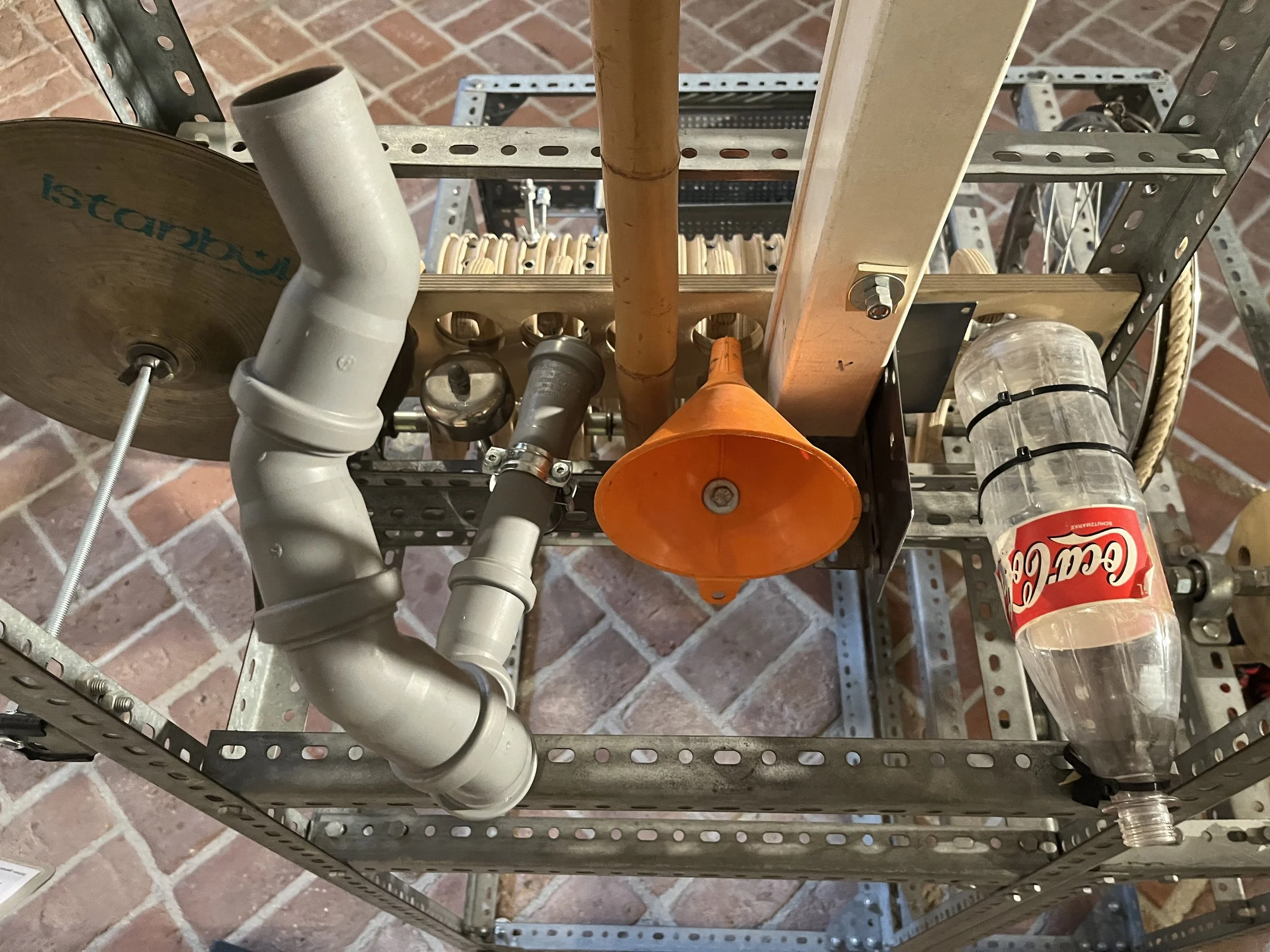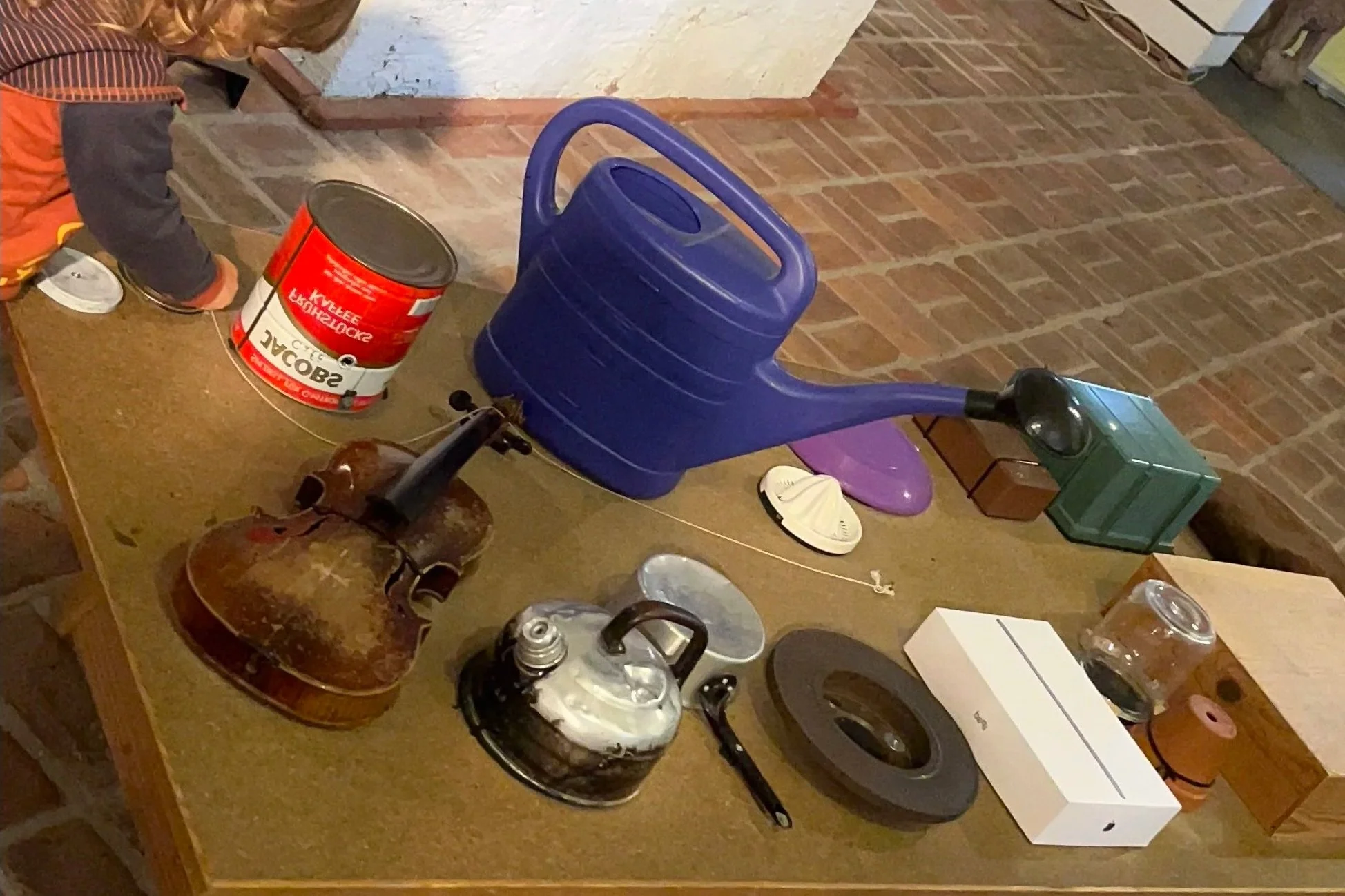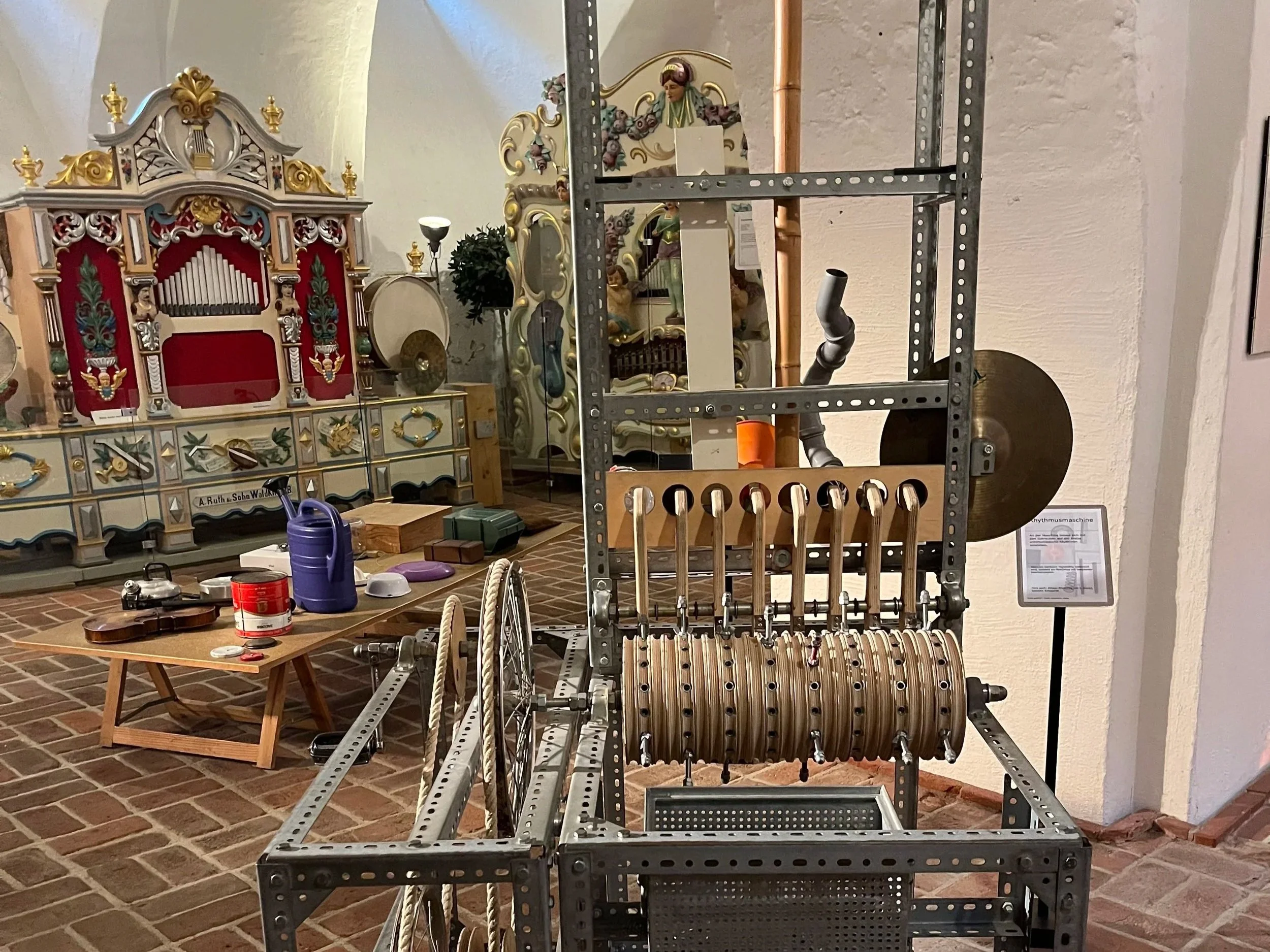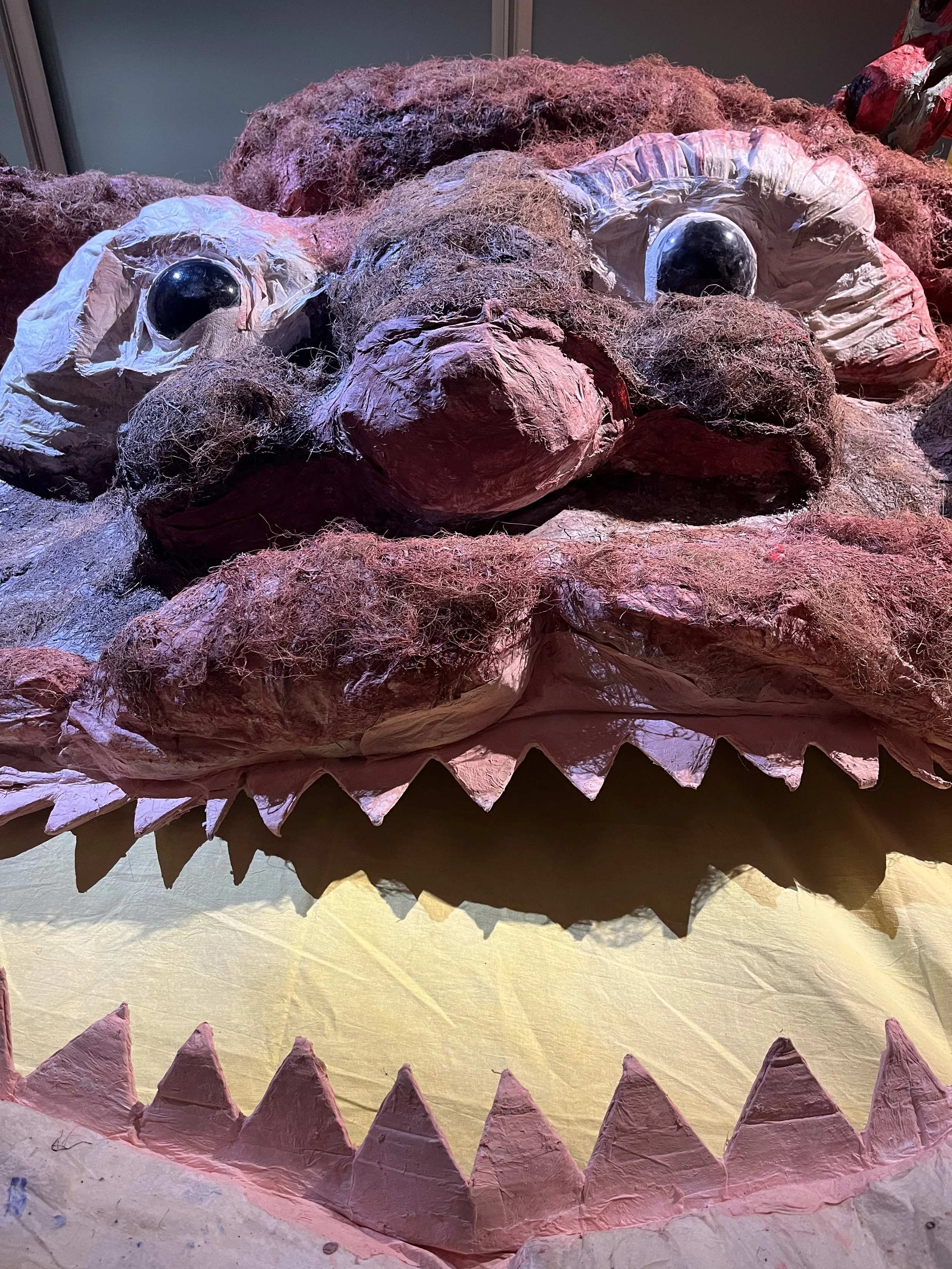Searching for Tinkering: Water, Cardboard and Sound
I’m always keeping an eye out for museum exhibitions, public art works, education programs or roadside attractions that can inspire new explorations. Over the past years it’s been really interesting to use that lens to investigate my new homebase in the Black Forest region of Germany. Tinkering might not be the most common term here but once you start looking around there are so many interesting examples that can relate to the making and tinkering universe. Here are a couple recent places that I visited that can relate to tinkering in some way shape or form.
The first continues the tradition of finding amazing tinkering experiences in the forest. On a hike in the Schwarzwald near Titisee I saw a little mini water mill museum on the map and had to check it out. Coming down the hill and checking out the small display, I immediately felt impressed by the scale and creativity of the project.
In this DIY display, water flows into the water mills attached to little moving automata figures in about fifteen little wooden houses. The little characters use tools, do woodworking and pop in and out of windows. Some of the houses had little LEDs which I assume are also powered by the spinning wheel attached to a generator. One of the most interesting mechanisms was on a miniature saw mill with a log that travels to the end of the house and then sprang back to the beginning. We spent a long time trying to look at the machine to see how it was working.
Here in Germany (or maybe just in this region?) it seems there are lots of people who are tinkerers, working on ideas and building amazing things that are interesting to them. I’m really enjoying discovering the world of makers and artists that take traditional woodworking or crafting in new directions.
Going from the hiking trail to the traditional art museum, I also recently got the chance to see a temporary exhibition by Monster Chetwynd at the Kunsthaus in Zurich. The exhibition contains all kids of provocative, slightly creepy, surreal and quirky sculptures, paintings and videos of performances.
I was mostly interested in the giant cardboard heads, a iconic element of the exhibition that create divisions and little rooms inside the larger space. Visitors enter the exhibit through and out the mouth of one huge homemade head. It was good to see the different technique and how for this style the softer mushy cardboard actually worked better for the sculptural element.
Another material that I would never think to use in a construction project is paper towels, but these added a strange and organic texture to some of the creatures.
It was really cool to see the tinkering aesthetic and approach highlighted in the show. There were displays of really rough cardboard models that were used to plan exhibits, cabinets of curiosities with rough drafts and funny little surprised like cardboard claws at the end of the table legs.
I enjoy seeing the wide walls of artists who take a tinkering approach. There’s much to learn and be inspired by the ways that Monster Chetwynd embraces the process, experiments with form, and pushes the boundaries both with materials and themes.
And then just this week, I went back to the Elztal museum in Waldkirch (host of the giant sound marble machine) to check out their new temporary display of about a dozen interactive sound machines made by a group called Akki based in Dusseldorf. These exhibits had the feeling of science center exhibits but with a more delightfully tinkerable spirit making use of everyday materials and humorous elements.
One of the things that I really loved was an adapted organ with a crank to fill the bellows, a wooden keyboard to activate the different pipes and then a wide variety of sound makers on top to be triggered by the air. It was really fun to press the keys to activate a party blower, water bubbler, bugle, harmonica and other familiar objects.
Another exhibit that we spent along time with was a table with tons of different materials and one of those small metal music boxes that can be found in souvenir shops. Visitors could test out how the music box sounded on different materials like a big plastic watering can, brick, sponge or antique violin base.
There were lots of things to jump on, play with mallets and sing into! One challenge with all of these sound exhibits is that when more than one was being used there was a lot of audio overlap. I remember back at the Exploratorium it was a big challenge to have sound exhibits near each other and we did a lot of experiments with noise reducing material, small rooms and experiences with headphones.
These three (very) different experiences provide lots of inspiration for tinkering activities and environments. As I find more exhibitions, events and trailside attractions that connect to playful experiences of art, science and technology, I’ll post them here with the ‘searching for tinkering’ tagline.



